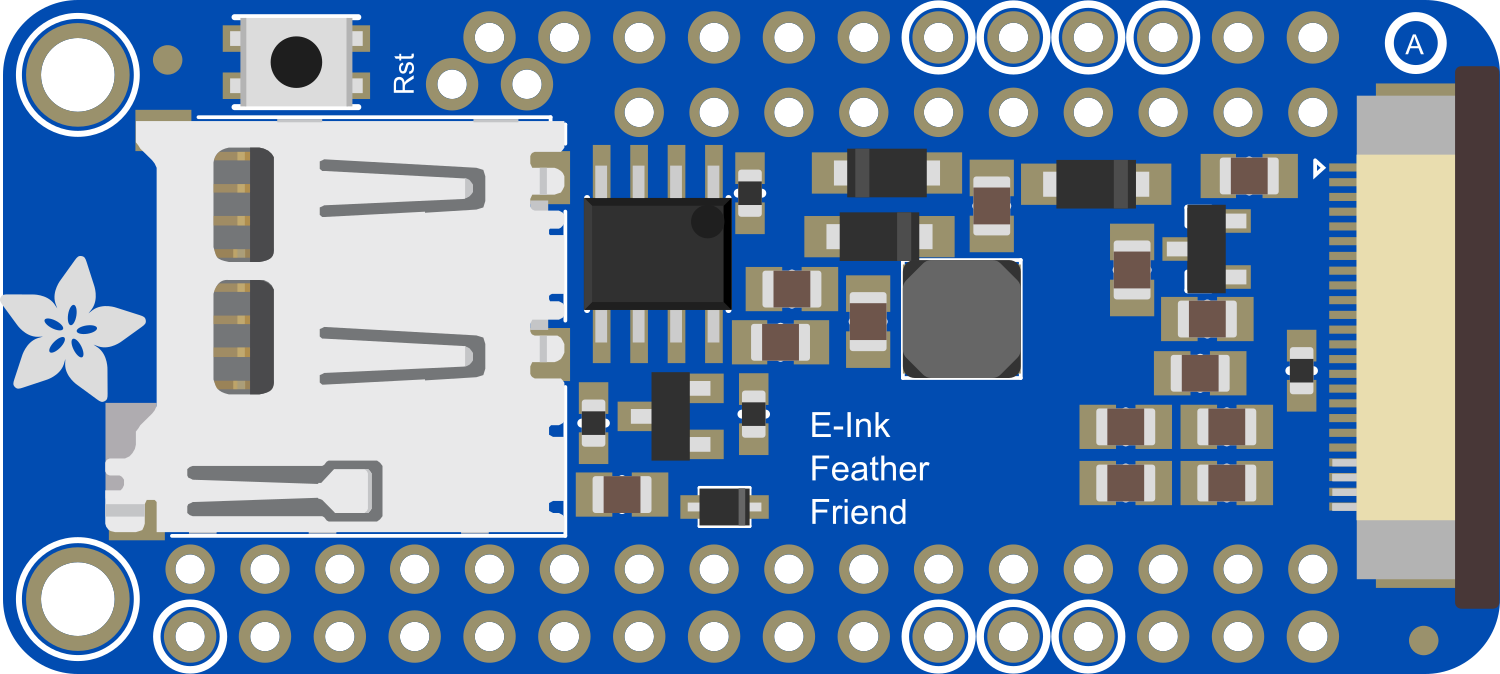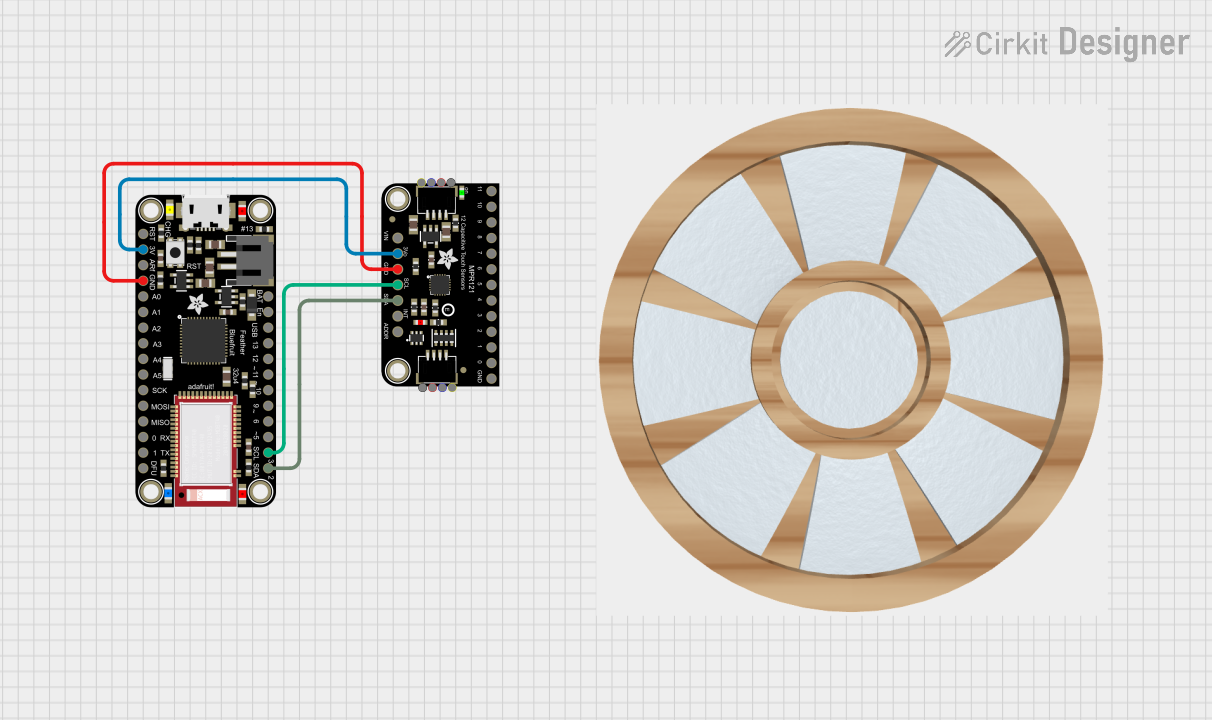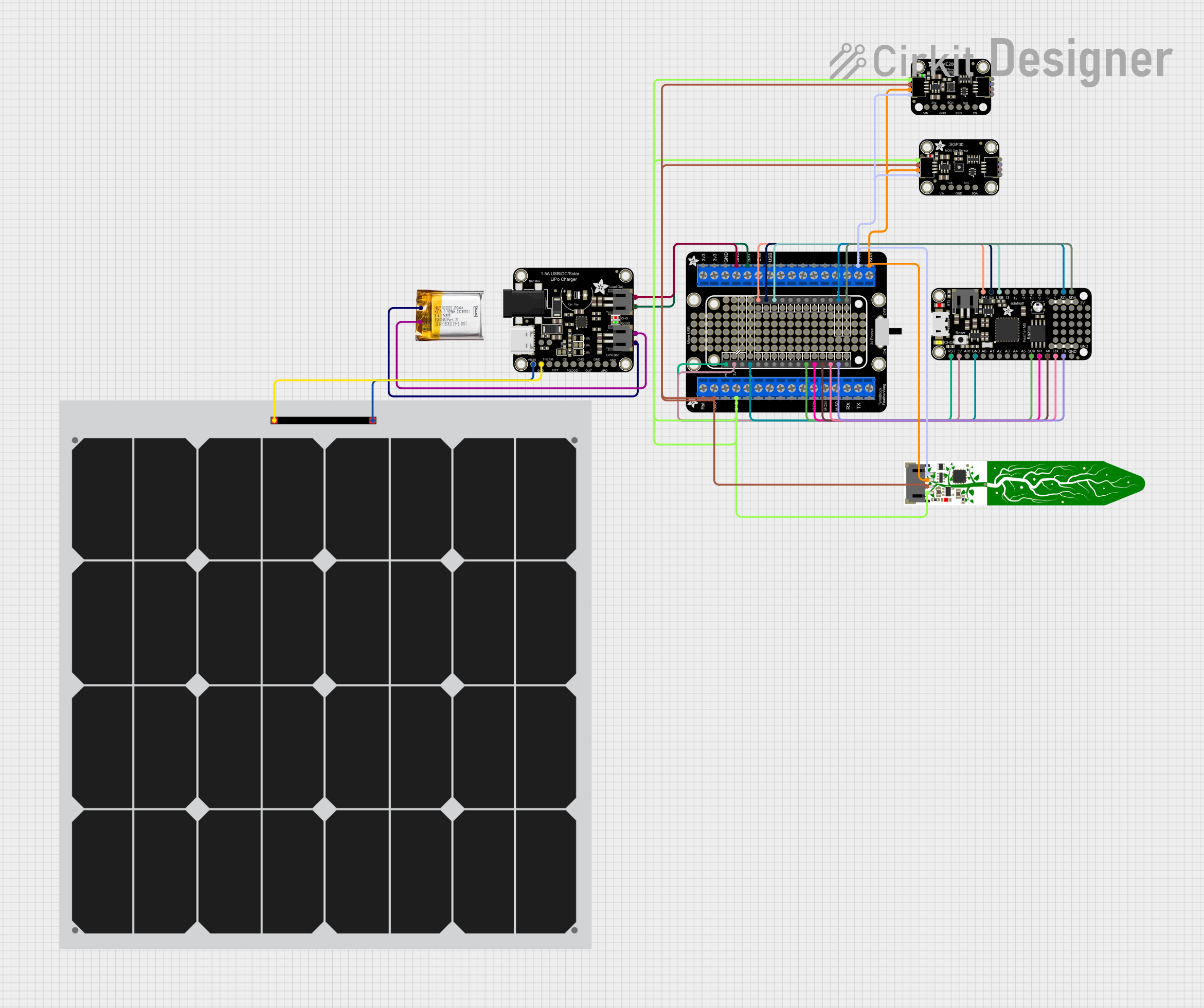
How to Use Adafruit eInk Feather Friend: Examples, Pinouts, and Specs

 Design with Adafruit eInk Feather Friend in Cirkit Designer
Design with Adafruit eInk Feather Friend in Cirkit DesignerIntroduction
The Adafruit eInk Feather Friend is an innovative display module that leverages e-Ink technology to deliver a low-power, high-contrast visual output. It is specifically designed to interface seamlessly with Adafruit's Feather series of development boards. This component is particularly suitable for applications where power consumption is critical, as the e-Ink display retains the image without the need for continuous power supply. Common applications include e-readers, digital signage, wearables, and any project where a persistent display is beneficial.
Explore Projects Built with Adafruit eInk Feather Friend

 Open Project in Cirkit Designer
Open Project in Cirkit Designer
 Open Project in Cirkit Designer
Open Project in Cirkit Designer
 Open Project in Cirkit Designer
Open Project in Cirkit Designer
 Open Project in Cirkit Designer
Open Project in Cirkit DesignerExplore Projects Built with Adafruit eInk Feather Friend

 Open Project in Cirkit Designer
Open Project in Cirkit Designer
 Open Project in Cirkit Designer
Open Project in Cirkit Designer
 Open Project in Cirkit Designer
Open Project in Cirkit Designer
 Open Project in Cirkit Designer
Open Project in Cirkit DesignerTechnical Specifications
Key Technical Details
- Display Technology: e-Ink (electrophoretic display)
- Compatibility: Designed for Adafruit Feather boards
- Communication Protocol: SPI (Serial Peripheral Interface)
- Operating Voltage: 3.3V (from Feather board)
- Current Consumption: Varies with update frequency
- Display Resolution: Dependent on the attached e-Ink display panel
Pin Configuration and Descriptions
| Pin Number | Name | Description |
|---|---|---|
| 1 | GND | Ground connection |
| 2 | 3V | 3.3V power supply from the Feather board |
| 3 | BUSY | Indicates the display is busy updating |
| 4 | RST | Reset pin for the display |
| 5 | DC | Data/Command control pin |
| 6 | CS | Chip Select for SPI |
| 7 | CLK | SPI Clock |
| 8 | MOSI | Master Out Slave In for SPI data |
| 9 | MISO | Master In Slave Out for SPI data (not used) |
| 10 | EN | Enable pin for the display (optional use) |
Usage Instructions
Integrating with a Circuit
To use the Adafruit eInk Feather Friend with a Feather board:
- Align the headers of the eInk Feather Friend with the corresponding sockets on the Feather board and press gently to connect.
- Ensure that the display panel is correctly connected to the Feather Friend if it is not already attached.
- Connect the Feather board to your computer via USB to program it.
Programming the Display
To control the eInk display from an Arduino UNO or compatible Feather board, you will need to include the Adafruit eInk library in your Arduino IDE. Here is a simple example code snippet to initialize the display:
#include <Adafruit_EPD.h>
// Replace with the specific model number of your eInk display
#define EPD_MODEL Adafruit_IL0373
// Width and height of the display in pixels
#define EPD_WIDTH 122
#define EPD_HEIGHT 250
// Create an instance of the display
EPD_MODEL display(EPD_WIDTH, EPD_HEIGHT, /*DC=*/ 9, /*CS=*/ 10, /*RST=*/ 8, /*BUSY=*/ 7);
void setup() {
// Initialize the display
display.begin();
// Clear the buffer to white
display.clearBuffer();
// Push the buffer to the display
display.display();
}
void loop() {
// Your code to update the display goes here
}
Best Practices
- Always ensure the display is not powered or updating when disconnecting or reconnecting it.
- Avoid updating the display more frequently than necessary to conserve power and extend the life of the display.
- Use partial updates when possible to minimize power consumption and update times.
Troubleshooting and FAQs
Common Issues
- Display not updating: Ensure that the display is correctly connected and that the SPI pins are properly configured in your code.
- Faint or incomplete image: This may be due to a low battery or insufficient power supply. Check the power connections and battery level.
- Garbled or random pixels: Make sure the display is properly initialized in your setup code and that the correct display model is specified.
Solutions and Tips
- If the display is not responding, try resetting the Feather board and ensuring that the correct library and drivers are installed.
- For faint images, try performing a full update of the display to refresh all pixels.
- Ensure that the display's busy pin is correctly handled in your code to avoid sending commands while the display is updating.
FAQs
Q: Can I use the eInk Feather Friend with other microcontrollers?
A: Yes, as long as the microcontroller supports SPI communication and operates at 3.3V logic levels.
Q: How do I update only a part of the display?
A: The Adafruit eInk library supports partial updates. Refer to the library documentation for functions that allow updating specific areas of the screen.
Q: How long can the display retain an image without power?
A: e-Ink displays can retain an image indefinitely without power, although the contrast may gradually fade over time.
For further assistance, consult the Adafruit eInk Feather Friend's official documentation and the Adafruit support forums.